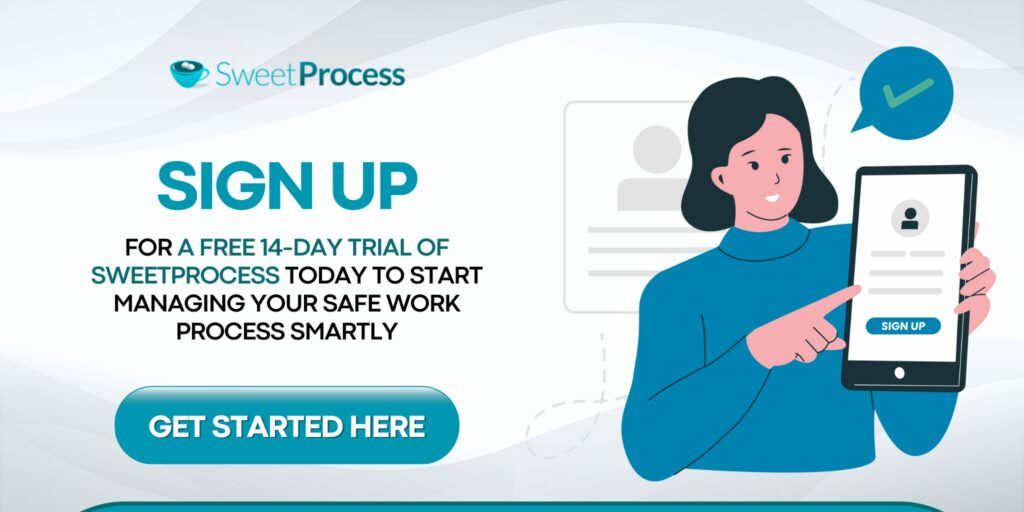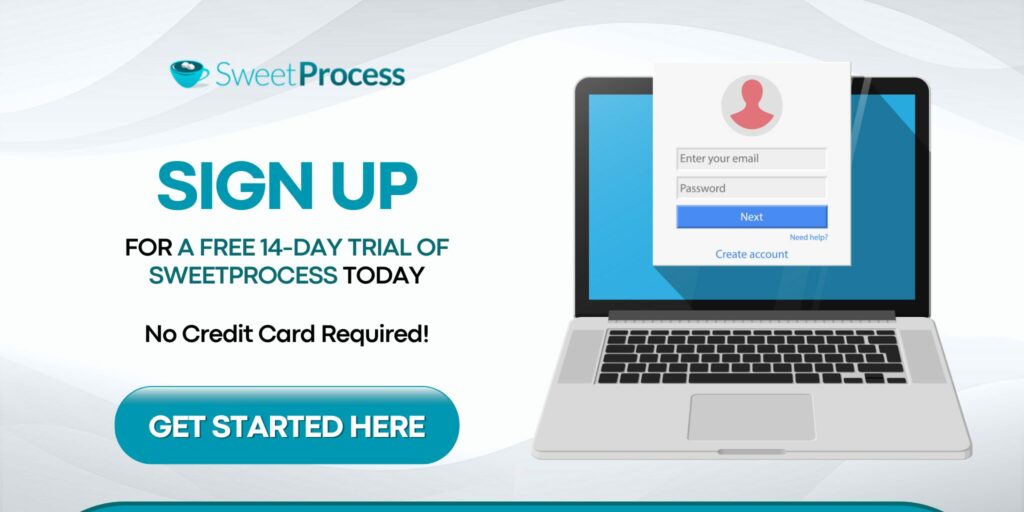Last Updated on February 21, 2025 by Owen McGab Enaohwo
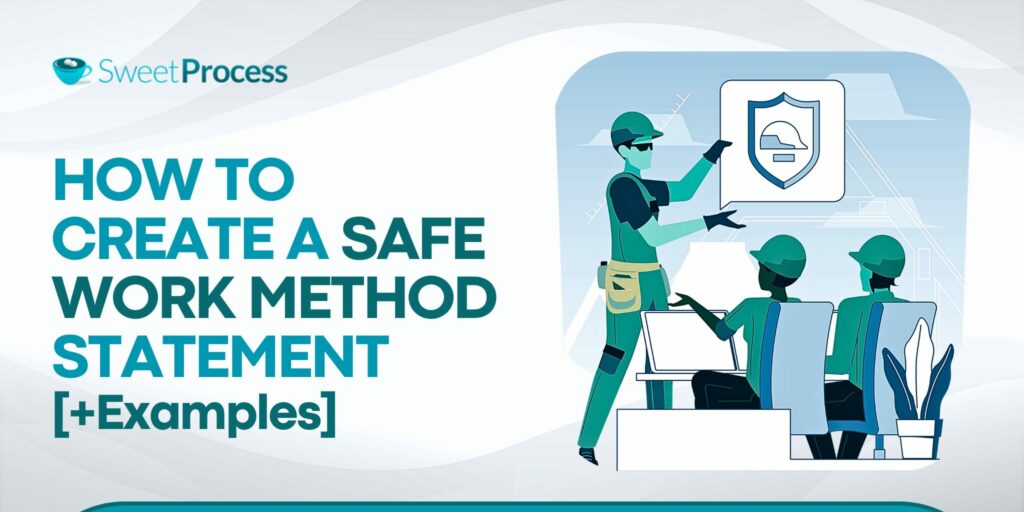
It started like any other day for Samantha, a 28-year-old warehouse worker and mother of two. She clocked in for her shift, unaware of a poorly secured pallet sitting high on a shelf in her workspace.
Hours later, it fell.
The force of the impact shattered her spine, leaving her paralyzed from the waist down. Her life, as she knew it, ended then and there. She is now cared for by her children, instead of providing for them, while her employer faces lawsuits and fines they may never recover from—all because someone skipped a safety check.
Every workplace accident tells a story of lives forever altered—families shattered by grief, careers ended in an instant, and dreams derailed by preventable injuries. Globally, nearly 3 million people die each year from work-related accidents or illnesses, according to the International Labour Organization. In the United States, workplace injuries cost $167 billion in 2022, yet these figures barely capture the emotional devastation that follows. Each statistic represents a person who didn’t make it home to a family that received the worst news imaginable.
Accidents don’t discriminate. While high-risk jobs like construction or mining may seem like the obvious culprits, even offices and retail spaces hide dangers—slips, falls, or repetitive strain injuries that silently steal health and livelihoods. Safe work method statements (SWMS) aren’t just paperwork—they are lifelines, essential tools for identifying and eliminating risks before tragedy strikes. When lives and livelihoods are at stake, the choice is clear: prioritize safety management or risk losing everything.
Don’t let your SWMS gather dust. Try out SweetProcess risk-free, with full features for 14 days.
What You’ll Learn In This Guide:
Why Are Safe Work Method Statements Important in the Workplace?
When Is a Safe Work Method Statement Required in an Organization?
How to Create a Safe Work Method Statement Using SweetProcess
Key Elements to Include When Creating a Safe Work Method Statement
A Quick Walkthrough on How to Create an SWMS in SweetProcess Using SweetAI (+ Examples)
Safe Work Method Statement vs. Risk Assessment: How Do They Differ?
What Is a Safe Work Method Statement (SWMS)?
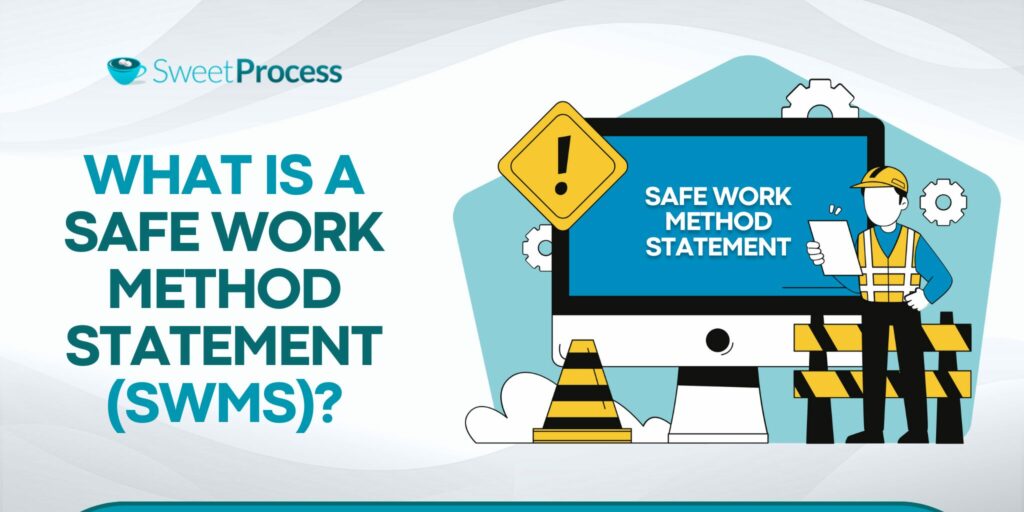
The Safe Work Method Statement (SWMS) had its beginnings in the mid-20th century when workplace safety became a priority. Early efforts to manage risks involved basic safety instructions and checklists. However, these evolved as governments and organizations recognized the need for structured approaches to reduce workplace hazards.
By the 1970s, risk management frameworks began taking shape, especially in high-risk industries like construction. SWMS-style documents gained traction globally, reflecting a growing emphasis on proactive safety measures. Although SWMS originated in construction, similar documents are now widely used in industries such as mining, manufacturing, logistics, and energy, where managing hazards is critical.
In Australia, the SWMS concept became formalized in the 1980s and 1990s, eventually becoming a legal requirement under the Model Work Health and Safety (WHS) Laws (2011). These regulations mandated SWMS for high-risk work construction tasks, requiring detailed descriptions of activities, job safety analysis, associated risks, and control measures. Comparable frameworks include the job hazard analyses in the U.S. and method statements in the U.K.
Today, SWMS plays a key role in workplace safety, ensuring compliance with regulations with a safety-first culture at heart. Advances in technology have made these documents more accessible, with digital tools enabling real-time updates and improved tracking.
Tools such as SweetProcess allow SWMS documents to exist as dynamic, living documents that can be rapidly adapted to changing workplace conditions. It’s hard to overstate how important these can be in preventing injuries and helping organizations maintain operational efficiency by identifying and controlling risks before they occur.
Why Are Safe Work Method Statements Important in the Workplace?
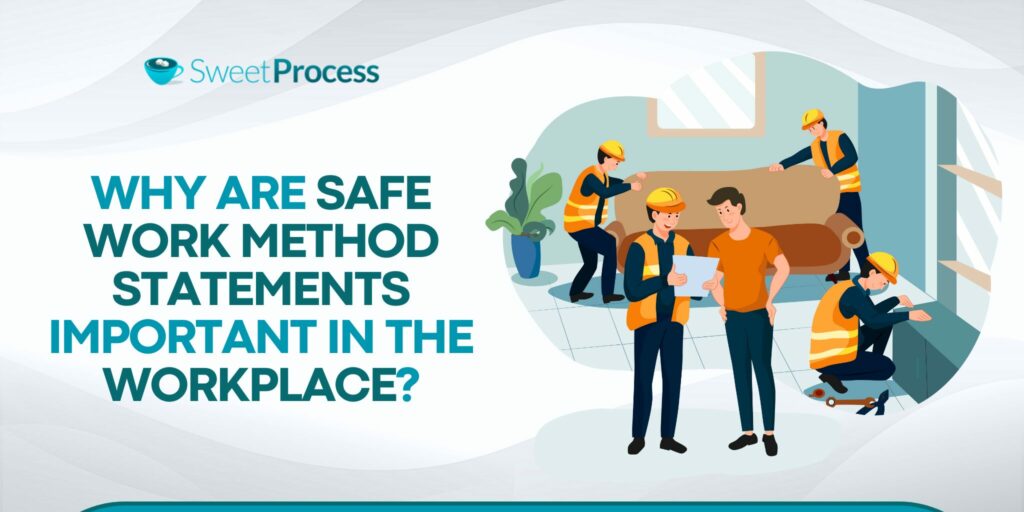
Safe work method statements (SWMS) are more than just compliance documents—they are practical tools for protecting lives, improving operations, and ensuring a productive workplace.
Here’s why they matter today more than ever:
Reduces Workplace Accidents
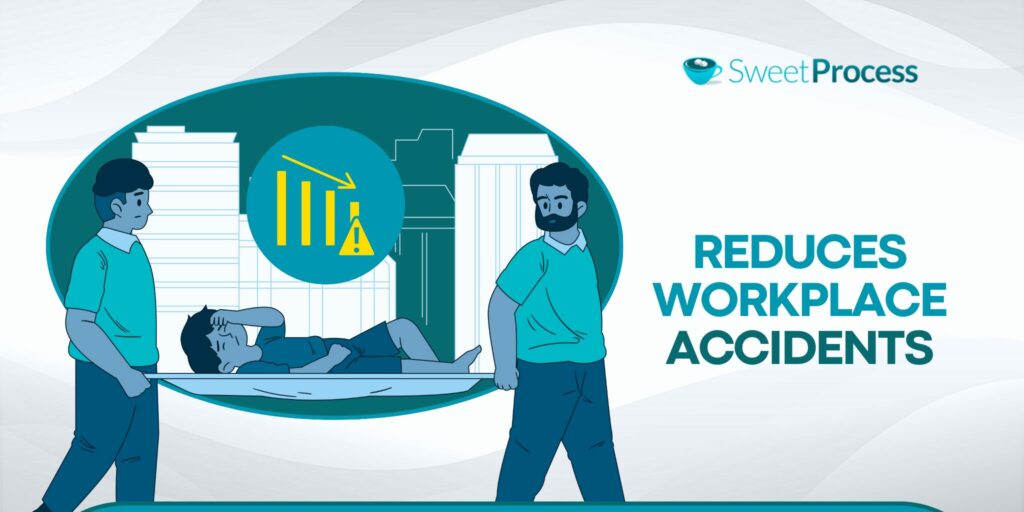
The purpose of a safe work method statement is to directly prevent injuries by identifying hazards and providing clear, actionable procedures to control them. For example, in construction, where falls, electrical hazards and heavy machinery pose significant risks, an SWMS outlines how to perform tasks for safe system safety.
Ensures Legal Compliance
As stated in the previous section, various governments require SWMS in select industries as a matter of policy. Non-compliance with workplace safety laws can result in severe penalties, project shutdowns, or legal liability. SWMS ensures businesses meet regulatory standards, particularly in high-risk industries like construction, mining, or energy. Beyond just avoiding fines, maintaining a SWMS demonstrates an organization’s commitment to safety to its society, clients, and stakeholders.
Improves Team Collaboration
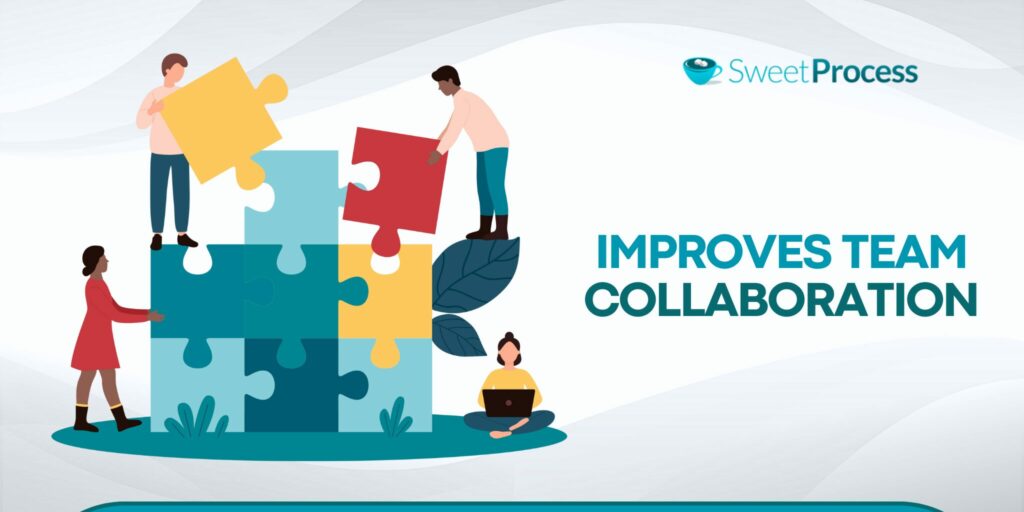
An SWMS promotes clarity and accountability by specifying processes and procedures for who does what, how, and why. For teams operating in a dynamic, high-risk task work environment, this shared understanding reduces confusion, prevents errors, and ensures tasks are executed efficiently and safely.
SWMS also becomes even more effective if used through a cloud-based collaboration system such as SweetProcess. Not only can team members dial down on specific procedures whenever they want, but they can also make changes to the document then and there, all while keeping their teammates in the loop.
Identifies Potential Risks
By requiring a detailed assessment of every step in a task, SWMS helps teams uncover risks that might otherwise be overlooked. For example, a SWMS for installing roof panels can help identify fall risks when dealing with unsecured tools and slippery surfaces. It can also implement guardrails, tool lanyards, and weather checks, ensuring specific hazards are controlled to protect workers. It can also help identify how environmental factors like weather could impact scaffolding safety and prevent incidents before they occur.
Safe work method statements are indispensable for building safer, more efficient workplaces. They don’t just fulfill legal obligations—they actively save lives, improve team coordination, and strengthen organizational resilience by addressing risks before they escalate into problems.
However, outdated tools and manual processes often make SWMS cumbersome, reducing their effectiveness and relevance in the workplace.
For example, in Australia, several people pointed out how SWMS in Australia’s construction industry has become bloated and ineffective, partly due to outdated tools and processes. Antiquated methods lead to inefficiency, poor version control, and unnecessary complexity.
Modern cloud-based productivity tools like SweetProcess give purpose to SWMS documents by ensuring real-time collaboration. By simplifying workflow management and automating documentation, SweetProcess helps keep SWMS relevant, efficient, and aligned with actual safety needs—ensuring better hazard management without diverting critical resources from on-site safety practices.
When Is a Safe Work Method Statement Required in an Organization?
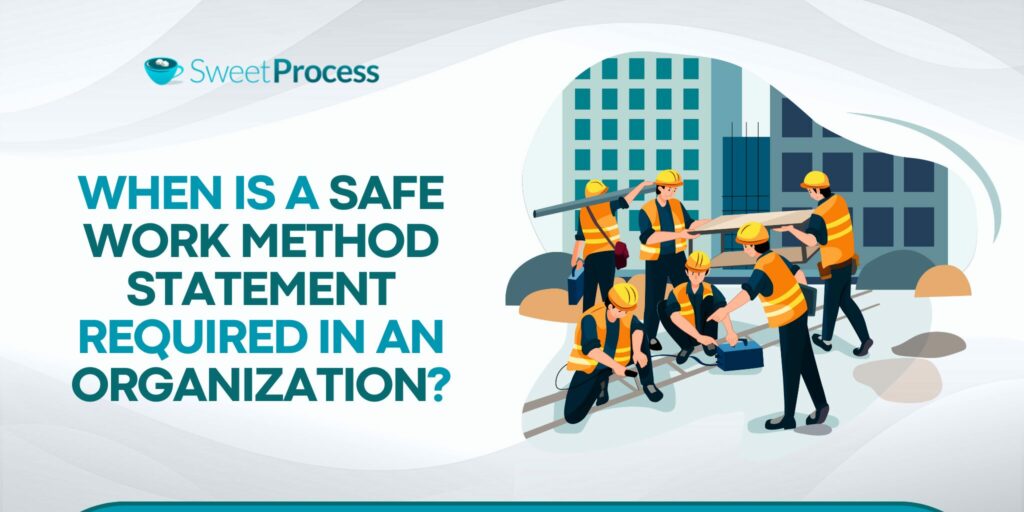
A safe work method statement (SWMS) is mandatory for high-risk construction work. In Australia, regulations define high-risk activities as tasks that involve a significant chance of serious injury or death if proper precautions are not taken. But knowing when an SWMS is required goes beyond legal compliance—it’s about proactively preventing accidents that could shatter lives and businesses.
An SWMS must be prepared for work instructions involving risks like operating near live electrical installations, working at heights over two meters, or using hazardous substances. Activities such as demolition, excavation deeper than 1.5 meters, or tasks in confined spaces also fall under the high-risk category. For example, assembling scaffolding without an SWMS exposes workers to severe falls, while welding in enclosed spaces risks deadly inhalation of toxic fumes.
Beyond high-risk industries, SWMS are valuable in relatively safer environments. For instance, offices conducting renovations, retail warehouses handling heavy stock, or schools organizing major events can all benefit from using an SWMS. Tasks like moving bulky equipment, managing crowd safety, or handling chemicals in cleaning operations may not seem dangerous but can lead to accidents without proper precautions.
Ultimately, an SWMS isn’t just a legal tool for construction—it’s a flexible safety strategy that applies to any workplace. Businesses in all sectors can protect their people, reputation, and bottom line by assessing risks and implementing controls.
How to Create a Safe Work Method Statement Using SweetProcess
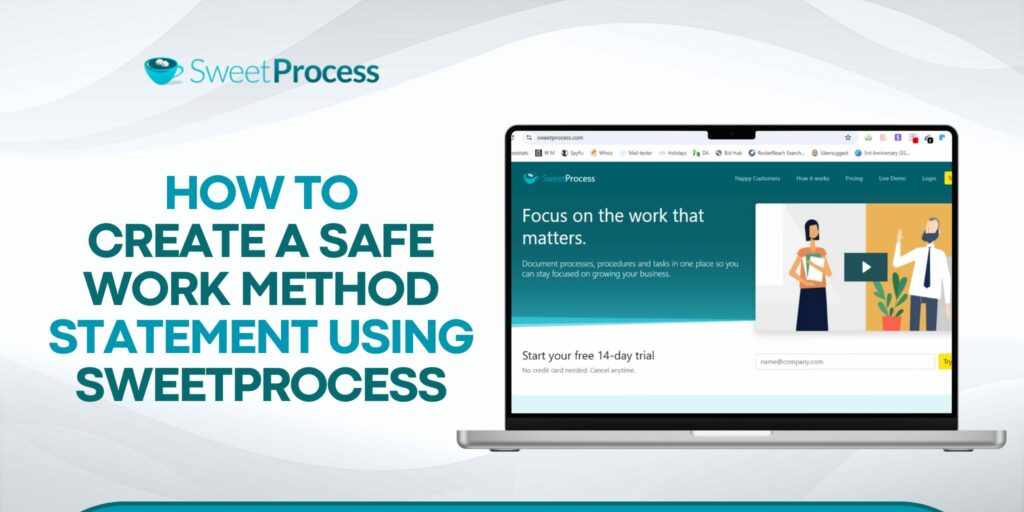
Since SWMS are usually step-by-step checklists, we will treat them as work procedures here. You can add them as part of processes or policies.
How to Document a Procedure Manually
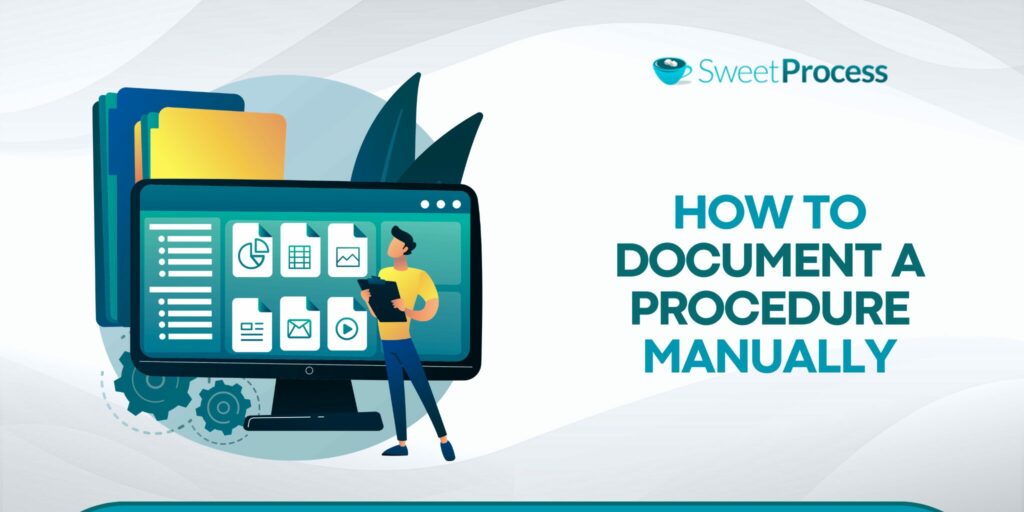
Log in to SweetProcess
First things first—log in to your SweetProcess account. If you’ve forgotten your password, now’s the time to reach out to your IT person.
Head Over to the “Procedures” Tab

Click on the “Procedures” tab at the top right-hand corner of your main dashboard to get started.
Name Your Procedure

Give your procedure a title. Something clear and concise but detailed enough at a glance.
Assign It to Teams

Add the procedure to a particular team or even multiple teams.
Describe the Procedure
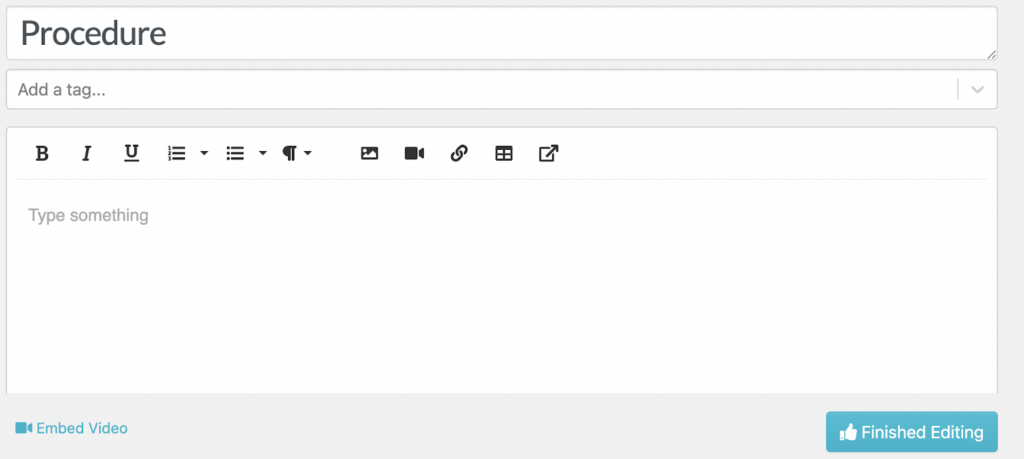
Define what your work procedure will do or look like. Keep it informative, but let’s not write the next great novel here.
Tap “Step” to Edit

Time to outline your procedure. Tap the “Step” button to start editing the document and add in each action step.
Details, Details, Details
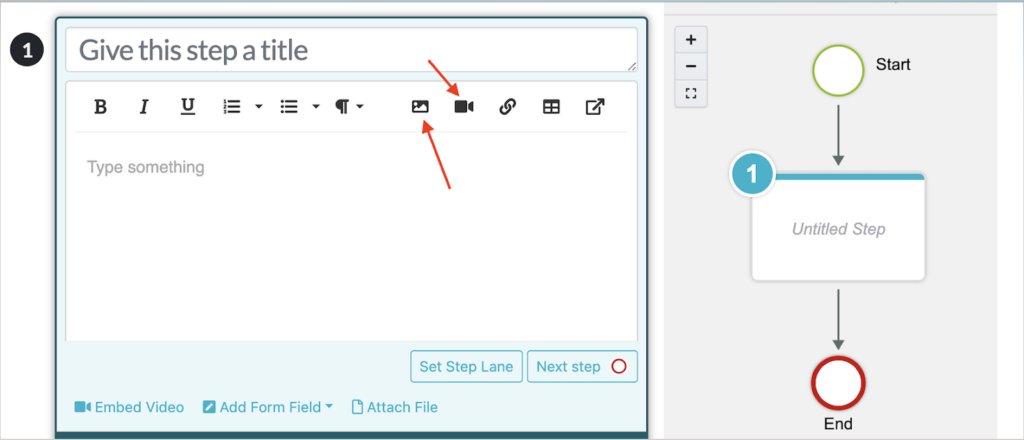
Add a title and description for each step. Need visuals? Embed images, videos, or links as needs dictate.
Repeat Until Complete
Got more steps? Rinse and repeat until your procedure is as comprehensive as it can be.
Tap “Approve”

Once every detail is locked in, tap “Approve.” Your procedure is now live on SweetProcess.
How to Write a Procedure Using AI
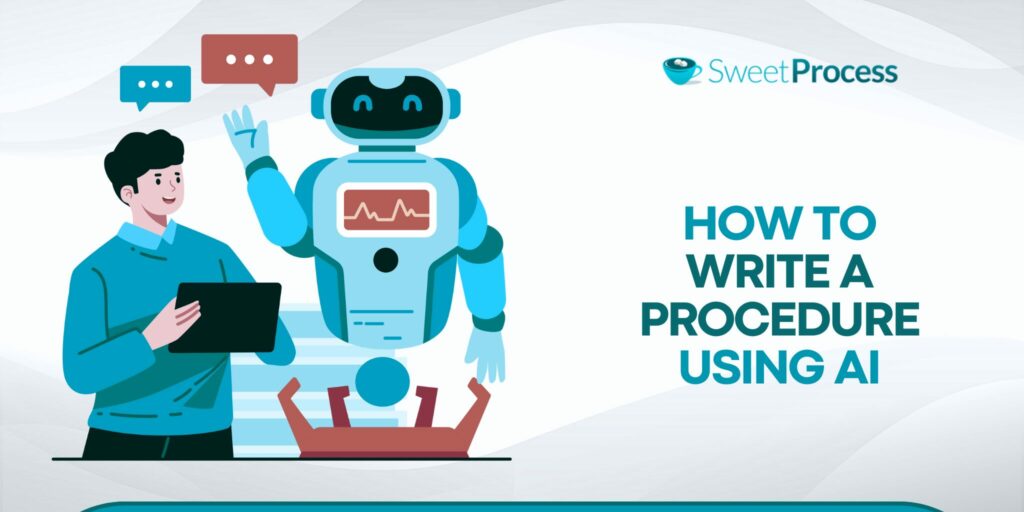
SweetAI is a powerful tool designed to assist construction project managers and site supervisors in developing safe work method statements (SWMS) quickly and efficiently.
With SweetAI, you can create a foundational draft of your SWMS, allowing for adjustments and refinements to meet project-specific needs.
Here’s how to write a procedure using SweetAI:
Let’s say you need to draft a safe work method statement for operating a mobile crane on-site.
Start by logging into your SweetProcess dashboard and selecting “New Procedure.”
A setup page will open, prompting you to enter key project details and the specific tasks. Use clear, straightforward language for the title, such as “Mobile Crane Operation—SWMS.”
Next, choose “Generate with SweetAI.” The AI will analyze your input and produce a preliminary draft within a minute.

Beyond just listing steps, SweetAI organizes the information into a clear, actionable format.
For added clarity, a task flowchart is automatically created to visually represent the step-by-step process, ensuring every aspect of the SWMS is easily understood.
To make changes, simply click the edit icon next to any section of the SWMS. You can expand on steps, add new ones, or revise existing details as needed. For example, you can add more details and depth, highlight potential hazards, and suggest appropriate risk control measures, risk assessments, and tools (such as PPE).
How to Assign a Safe Work Method Statement
Assigning a SWMS as a procedure ensures that critical safety procedures are followed and tracked during work. You’ll receive notifications when the task is overdue or completed, and so will the assigned employees.
You can integrate checklists and forms within the SWMS for employees to fill out as they complete tasks. This data is saved, timestamped, and can be exported to Microsoft Excel, providing clear records of when each step was completed and by whom.
Tasks can be one-time or recurring, such as scheduling a SWMS review every third Friday of the month.
For greater integration, connect your tasks via our API to streamline workflows across your business.
You can assign a single SWMS for multiple employees to collaborate on, or assign individual SWMS tasks to each employee separately, using bulk task assignments.
Note: Only users with manager-level access can assign tasks. However, you can enable teammates to assign by modifying permissions.
Assign the Task
Select the “three dots menu” next to the procedure you want to assign.

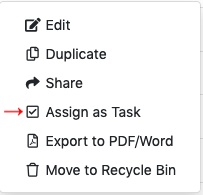
In the menu, click “Assign as Task.” You can also assign directly from the procedure view by selecting “Actions” in the top-right corner.
Single or Multiple Tasks
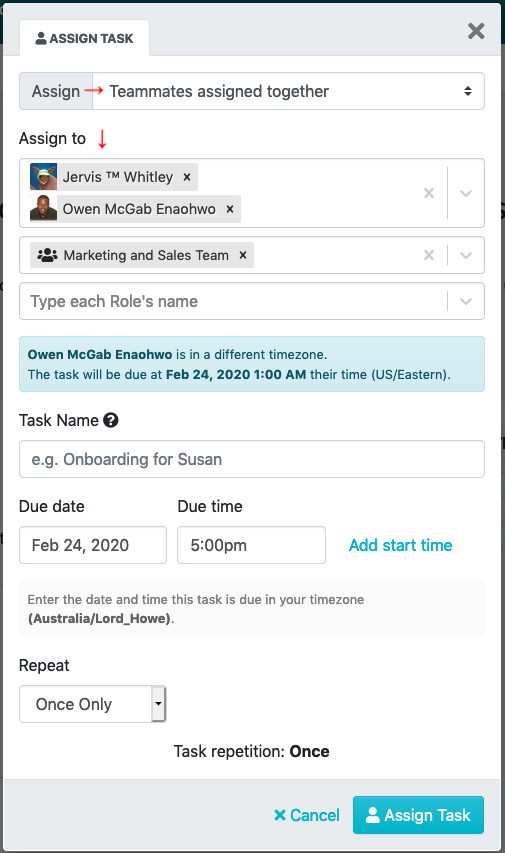
You can choose to assign a single SWMS task to a group to complete together or distribute multiple tasks individually to each teammate.
Select all teammates for assignment or assign to entire teams or specific roles. Based on your selection, they will either collaborate or receive separate assignments.
Complete the task details:
- Task name: Clearly label the task for easy identification.
- Due date: Set a deadline for completion.
- Start time: Employees receive notifications at the start time (or by the due date if no start time is set).
- Early start: Allow employees to begin tasks early if necessary.
- Repetition: Customize repetition settings, from simple weekly or monthly cycles to complex rules like “every last Friday of the month.”
Recurring Tasks
By default, tasks are “Once only” for single-use completion. However, SWMS tasks may need to recur daily, weekly, monthly, or annually. Adjust the repetition dropdown to fit your needs.
How to Require a Team Member to Sign Off an SWMS
The sign-off feature in SweetProcess ensures your team reads and acknowledges procedures, processes, and policies. You can attach sign-offs to teams, requiring every member to confirm their understanding. SweetProcess tracks who has signed off and identifies those who haven’t.
Setting Up Sign-Off Rules
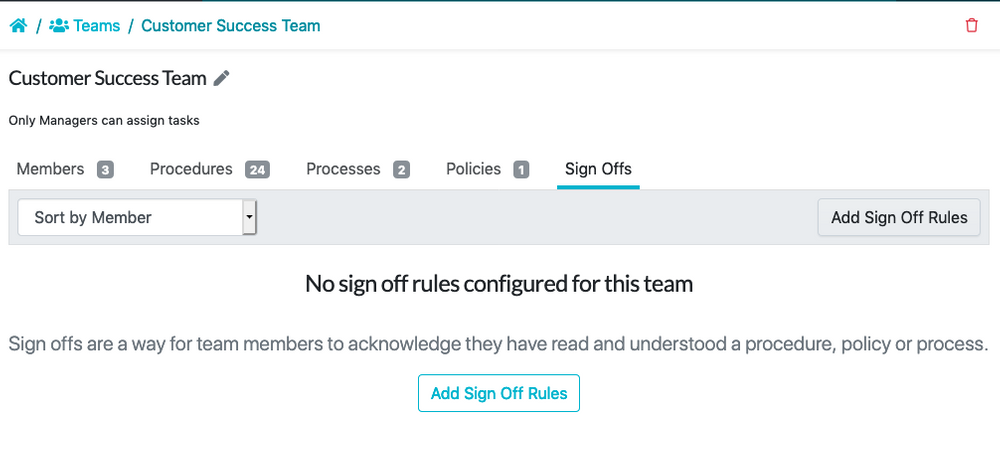
Go to the team’s Sign Offs page and click “Add Sign-Off Rules.”
By default, team members must sign off on all existing documents. You can also require sign-off:
- When a new document is approved.
- When a new member joins the team.
- When a manager manually requests it.
Optional: Automatically require sign-off for every approved document. This eliminates manual requests but may create notification overload for minor updates.
Manual Sign-Off Requests
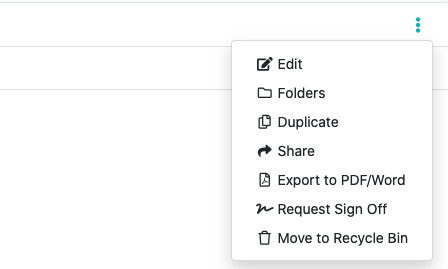
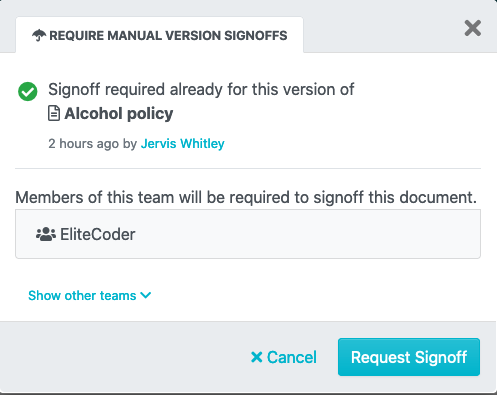
If enabled, managers can manually request sign-offs through the “Request Sign Off” button under the document’s actions menu. You can re-request sign-offs for updated versions—only those who missed the initial request will be notified.
Monitoring Sign-Off Status

SweetProcess enables you to monitor SWMS sign-off status in real time from the main dashboard.
How Team Members Sign Off

When visiting a document that requires sign-off, members will see a banner prompting them to sign. They sign at the bottom of the document, and SweetProcess records the version and timestamp.
How SweetProcess Helps Businesses Work More Safely
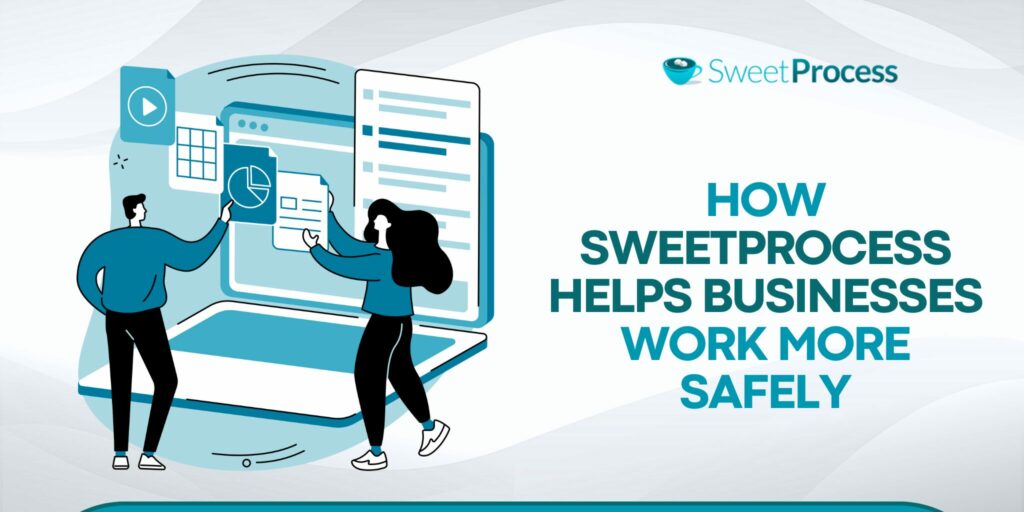
When creating a safe work method statement (SWMS) in SweetProcess, examples from real-world applications highlight its effectiveness in driving safety, consistency, and compliance. We have several examples of companies making their working environments safer and more productive.
For example, Simple Solutions, a B2B consulting firm, faced recurring errors and inefficiencies due to the absence of documented workflows. Tasks were handled inconsistently, leading to costly rework and increased risk in critical processes.
By using SweetProcess to document and enforce step-by-step procedures, Simple Solutions established safer, more efficient practices. Employees followed structured processes, reducing errors and ensuring that all tasks adhered to safety and quality standards. This mirrored the principles behind creating an SWMS—identifying potential hazards and outlining the safest way to perform tasks.
Similarly, The Dentist Off Main recognized the importance of streamlining operations to protect both staff and patients, particularly during the COVID-19 pandemic. Without standardized procedures, inconsistencies in patient care and infection control posed significant risks.
SweetProcess enabled them to document and implement protocols that minimized physical contact and enhanced hygiene practices. By clearly defining each step, employees adhered to safe procedures consistently, reducing the likelihood of errors or oversights.
These examples demonstrate how SweetProcess can be a great tool for creating, managing, and delegating SWMS. By centralizing and standardizing procedures, organizations reinforce safe practices, ensure compliance, and empower employees to operate within defined safety guidelines. This approach protects the workforce and drives continuous improvement and accountability, essential elements in fostering a safe and compliant workplace.
Key Elements to Include When Creating a Safe Work Method Statement
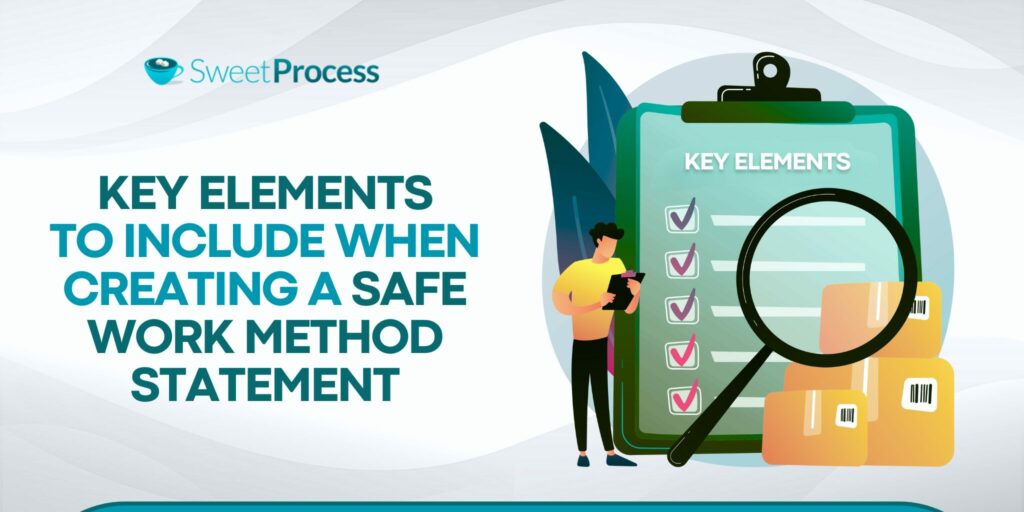
Creating a safe work method statement (SWMS) may seem straightforward, but it’s alarmingly easy to overlook crucial details that could prevent accidents. A well-prepared SWMS ensures every potential hazard is addressed, responsibilities are clear, and safety measures are actionable. The following key elements help ensure no critical step is missed.
Identify the Task or Activity
The first step in creating an SWMS is clearly defining the task or activity. This ensures that the document focuses on specific actions and their associated risks. For instance, an office undergoing renovations might identify the task as installing new overhead lighting in the main workspace. Precision at this stage sets the foundation for a targeted and effective SWMS.
List Potential Hazards
Once the task is identified, list all potential hazards associated with it. This step ensures no risks are overlooked. Using the same example, hazards might include falling tools, electrical shocks, or employees tripping over exposed wiring. In other industries, hazards could range from repetitive strain injuries in data entry tasks to chemical exposure during cleaning operations.
Outline Control Measures
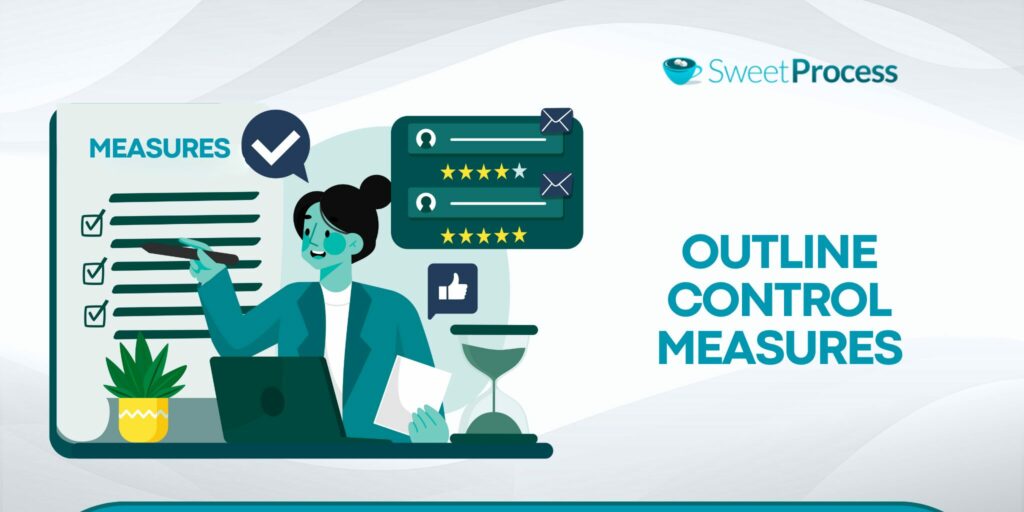
Control measures are steps taken to mitigate risks and ensure safety. For the office lighting example, appropriate control measures might include securing tools and materials, ensuring power is switched off before work begins, and cordoning off the workspace to prevent employee access. Each measure should be practical and directly address the identified hazards.
Assign Responsibilities
Clearly outline who is responsible for implementing each control measure. Assign tasks to individuals or teams with appropriate expertise. For instance, the maintenance team may be responsible for securing equipment, while an office manager ensures staff are notified about restricted access areas. Clarity in responsibilities prevents confusion and ensures accountability.
Review and Approve the SWMS
Before the task begins, the SWMS should be reviewed and approved by a qualified person, such as a safety officer or manager. This step ensures all risks and controls are adequately addressed. Regular reviews should also be conducted for ongoing or repetitive tasks, especially if conditions change. Work instruction software such as SweetProcess can greatly help you identify and fix flaws in your plans here.
Communicate the SWMS to the Team
Finally, ensure that all workers involved in the task understand the SWMS. Conduct a briefing or training session to explain the document and its key points. For example, in a retail warehouse handling heavy stock, team members should understand the proper lifting techniques outlined in the SWMS and the location of any emergency equipment. Clear communication ensures the SWMS is not just a document but a functional safety tool.
A Quick Walkthrough on How to Create an SWMS in SweetProcess Using SweetAI (+ Examples)
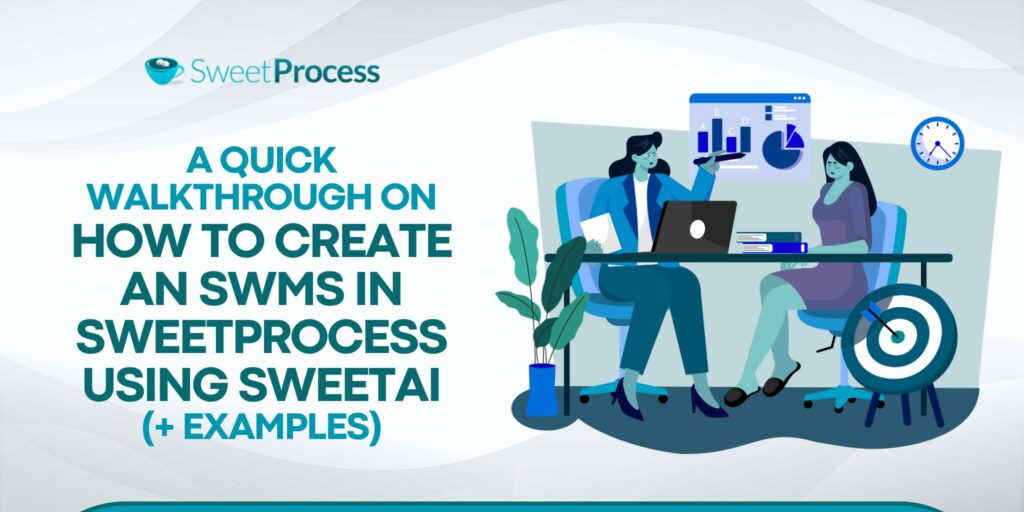
Start by logging in to SweetProcess, then click on the “Procedures” tab in the top menu.

Give your procedure a name and click on “Write with SweetAI.”
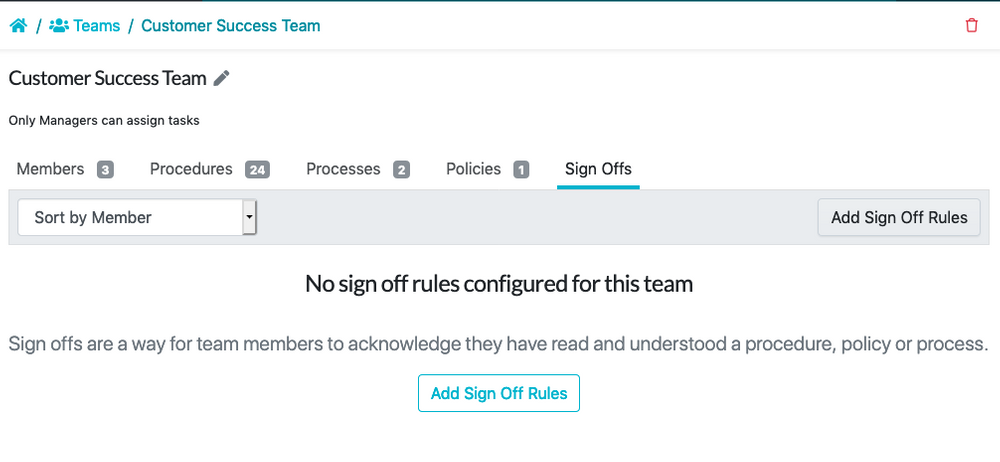
You will find the text field is automatically filled with text, which typically includes the document overview, scope, object, and responsibilities, along with the required steps.
You can also instruct SweetAI to customize the document for you.
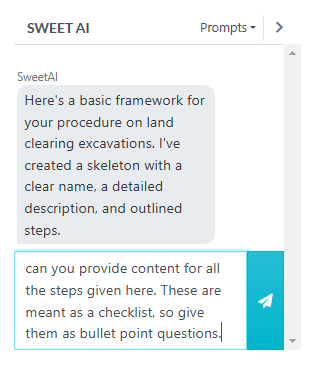
Let’s say we’re writing an excavation SWMS for a company named Brookfield Properties, which is a real estate developer. We can tell SweetAI of the company, what it does, and what is required. You can also add legal requirements to your prompts.
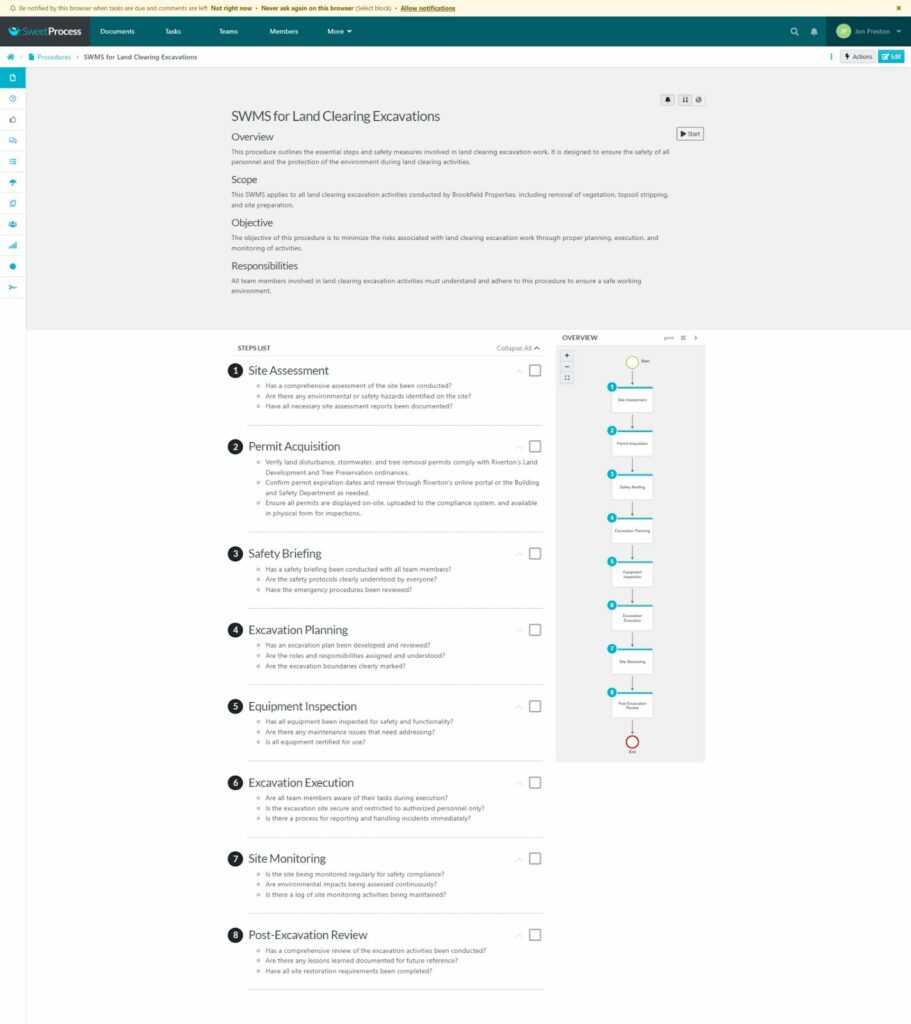
You can edit any of the steps by clicking on them. Or you can add the details in the chat window and instruct SweetAI to do it. For example, here we rewrote the permit acquisition part with specific instructions for a town named Riverton:
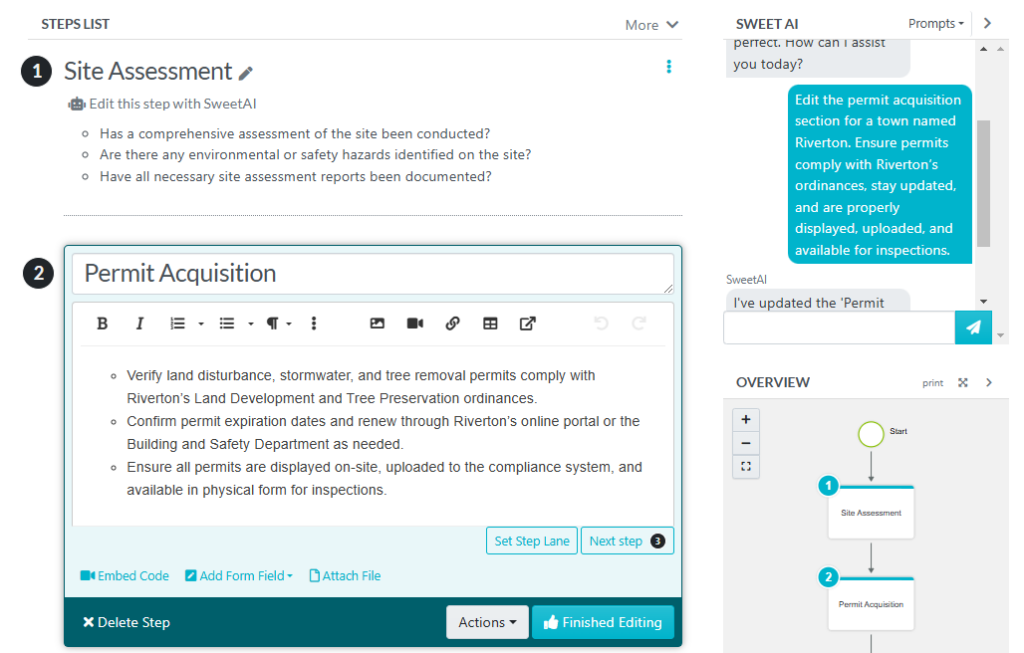
SweetProcess also creates a flowchart for your procedure:

To assign the SWMS to the requisite people, first create a team:

Next, add members to the team. You can invite people via email from the “invite new members to account” button.

Now, click “Procedures” in the menu and “Add Procedure” to assign your new SWMS to the team.
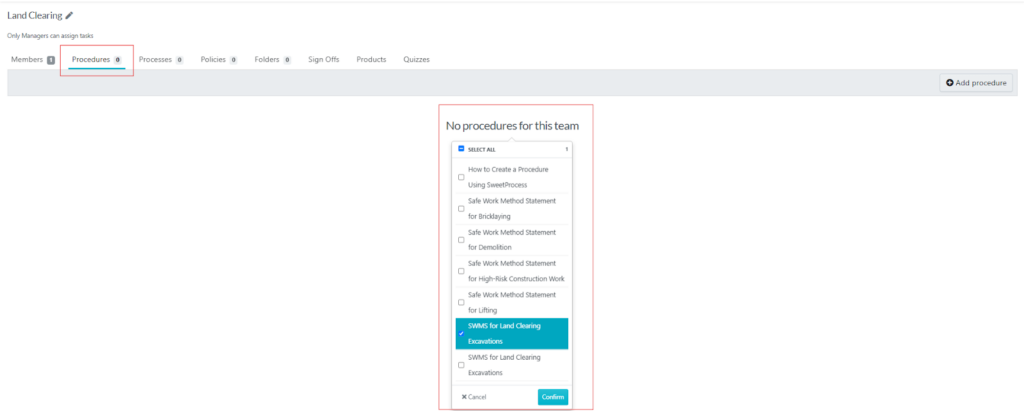
SweetProcess will automatically send an email updating all the team members of the SWMS. With SweetAI, companies can effortlessly create customized SWMS for any task or project. Here are some additional work instruction templates to draw inspiration from:
Safe Work Method Statement for Demolition
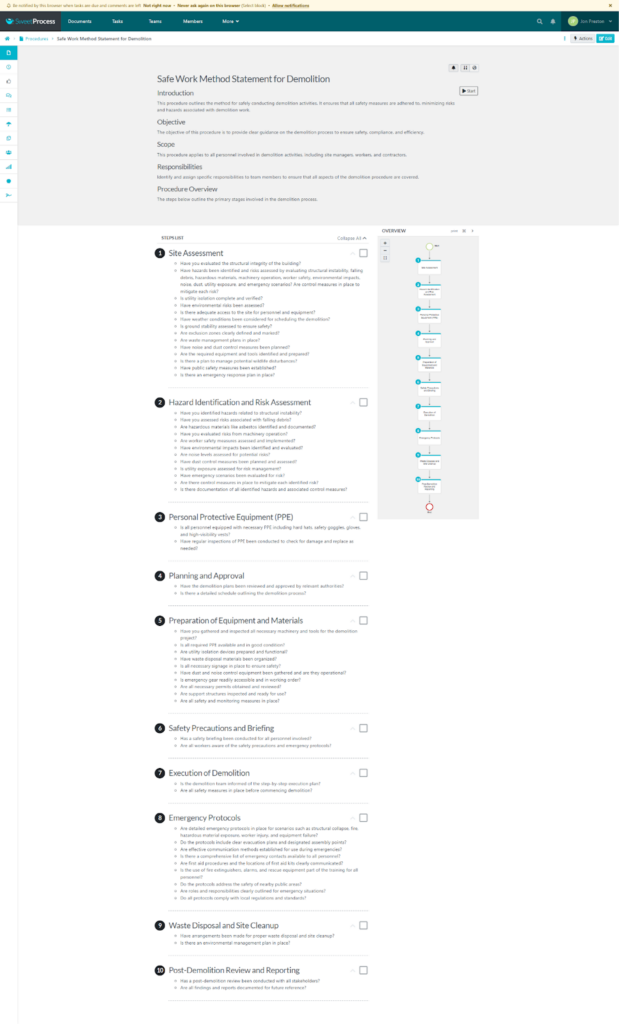
In this safe work method statement template, we used SweetAI to include more detailed steps for site assessment, hazard identification, preparation of equipment, and emergency protocols. We then edited the steps.
Safe Work Method Statement for Lifting
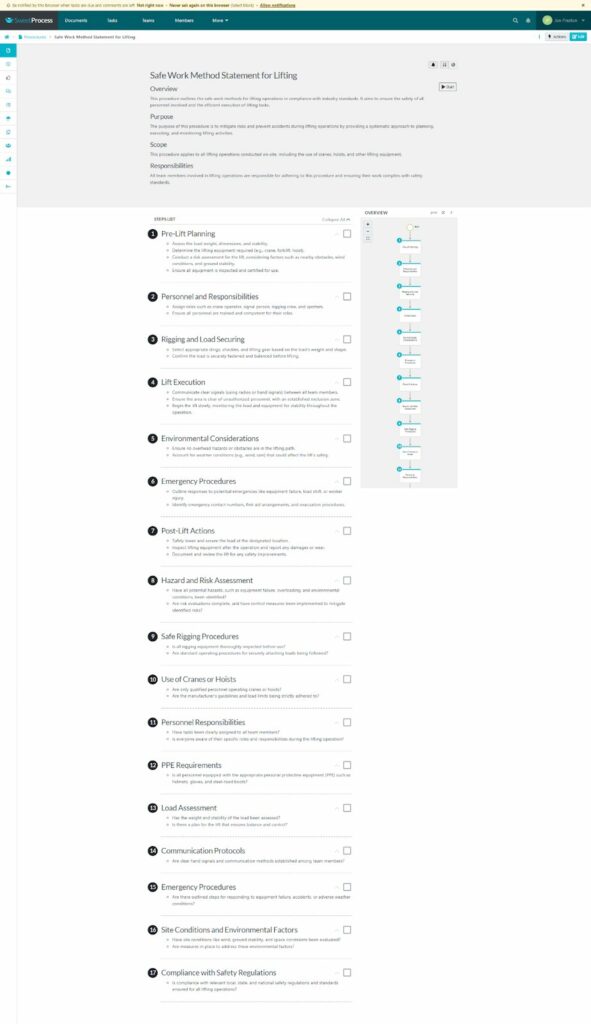
Safe Work Method Statement for Bricklaying
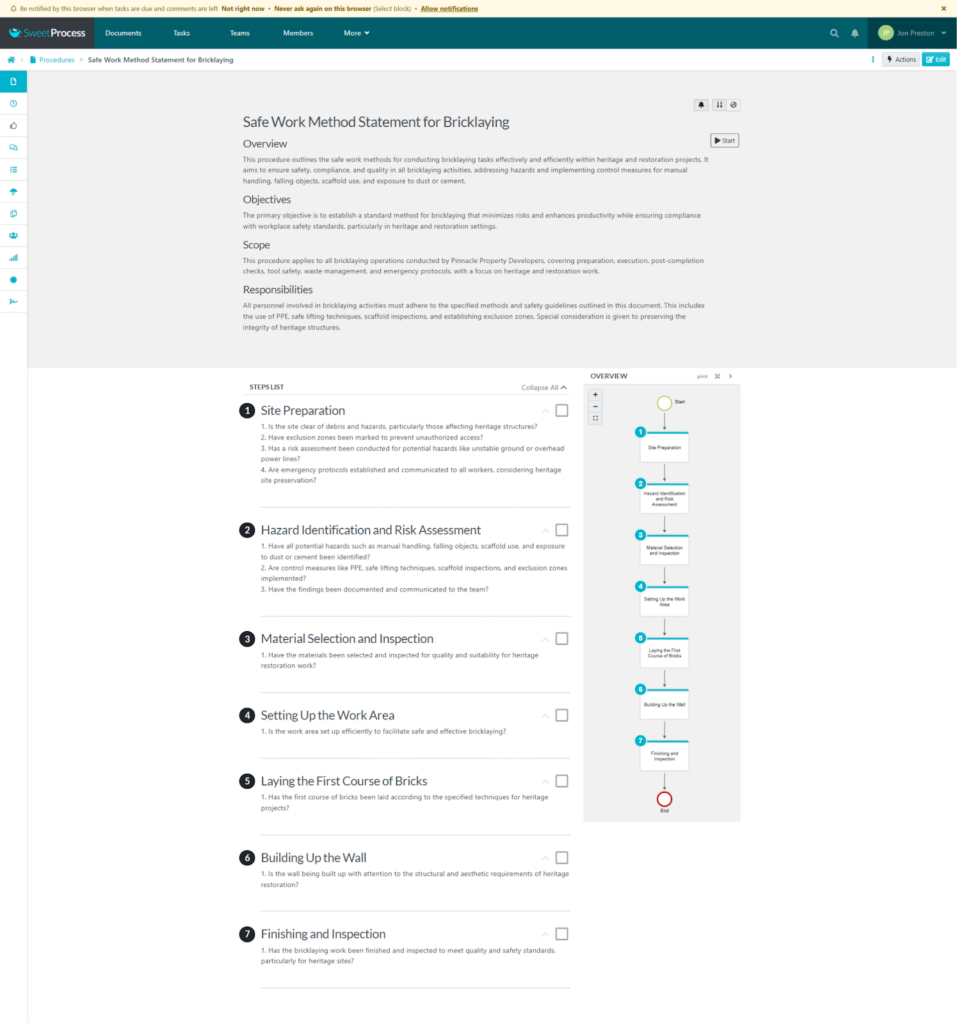
This is a safe work method statement template for a company that carries out the restoration of heritage sites and monuments. As such, the generated text includes key considerations needed for such projects.
Here is another template for confined space tank cleaning:
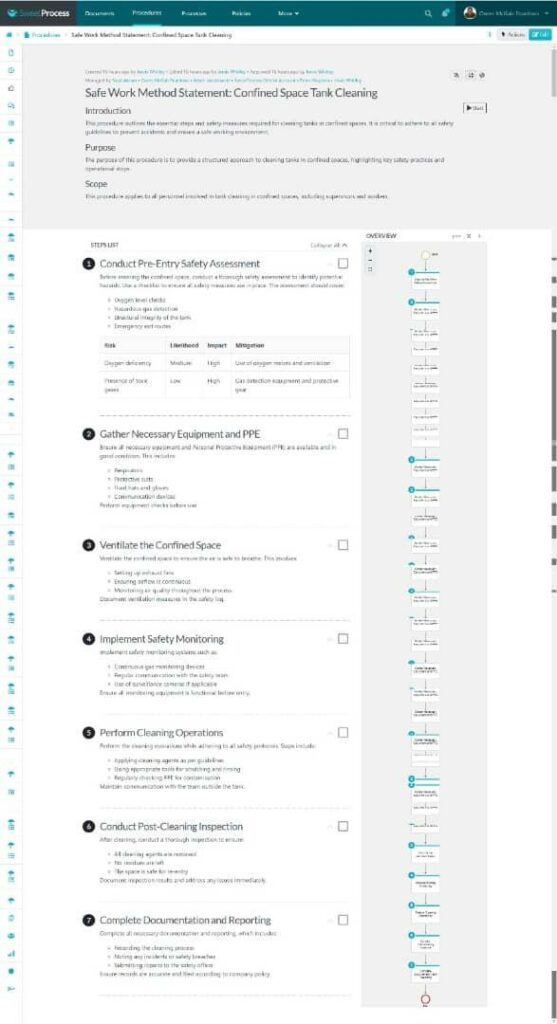
Safe Work Method Statement vs. Risk Assessment: How Do They Differ?
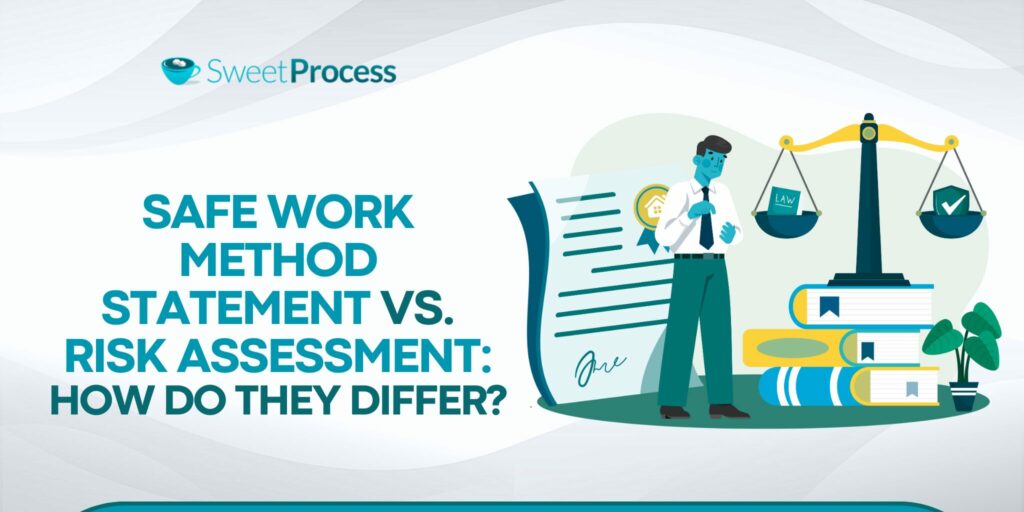
While often used interchangeably, a safe work method statement (SWMS) and a risk assessment document serve distinct purposes in workplace safety. Both are essential, but they address safety from different angles.
Risk assessment is a process that identifies potential hazards, evaluates the level of risk, and determines controls to minimize harm. It applies to any workplace activity and is often used to create a safety framework for ongoing operations.
For example, an office risk assessment might identify ergonomic hazards like poorly designed workstations causing repetitive strain injuries, and then recommend solutions like adjustable chairs and desk setups. Its action-oriented, iterative nature makes it a process, involving systematic steps to evaluate and manage risks over time.
In contrast, a SWMS is more specific and functions as a standard operating procedure. It is required for high-risk construction work but can also be applied to other industries. An SWMS outlines the exact steps to safely complete a task, the associated risks, and the control measures in place. For example, installing shelving in a retail store might require an SWMS detailing how to secure the shelves, the tools needed, and the safety precautions to avoid injury from falling objects.
While a risk assessment focuses on the process of identifying and managing risks, an SWMS provides the procedural instructions to safely execute specific tasks. Together, they form a comprehensive approach to workplace safety.
| Aspect | Safe Work Method Statement (SWMS) | Risk Assessment |
| Purpose | Provides step-by-step instructions to safely perform a task | Identifies and evaluates risks to create a safety framework |
| Scope | Task-specific; focuses on high-risk or particular activities | Broad; applies to overall workplace safety or processes |
| Nature | A procedure: detailed, action-oriented instructions | A process: systematic steps for identifying and managing risks |
| When Used | Required for high-risk work and useful for other industries | Applied to all activities, from routine to high-risk tasks |
| Focus | How to perform a task safely | What hazards exist and how to control them |
| Examples | Installing shelving in a retail store, using ladders | Office ergonomics, assessing risks for chemical storage |
| Output | A practical, actionable document for a specific task | A broader assessment used to inform safety strategies |
| Legal Requirements | Mandatory for high-risk construction work in many regions | Often required but less prescriptive than SWMS |
Do You Need a Separate SWMS for Each Activity?
Yes, in most cases, a separate safe work method statement (SWMS) is required for each distinct activity. This ensures that all risks associated with specific tasks are adequately addressed and controlled. Each task or activity has its own unique set of hazards, which requires tailored procedures and control measures to manage safely.
For example, if your team is working on both electrical wiring and heavy machinery operations, these tasks present very different risks. The SWMS for electrical work would focus on the dangers of electrical shocks, lockout/tagout procedures, and insulation requirements, while the SWMS for machinery operation would cover equipment failure, crushing hazards, and proper machine handling techniques. Combining both activities into a single SWMS would make it difficult to provide the level of detail necessary to protect workers.
However, if tasks are highly similar or part of the same process, a single SWMS may be sufficient. For instance, repetitive tasks like lifting heavy objects in a warehouse could be covered under one SWMS with a focus on proper lifting techniques and ergonomics. Additionally, you can also use specific standard operating procedures (SOPs) instead of complete SWMS for smaller tasks.
In summary, the need for separate SWMS depends on the activity’s complexity and associated risks. Tailoring each SWMS to the task ensures that all hazards are fully considered, providing workers with the highest level of safety.
Streamline Your Safe Work Method Statements With SweetProcess
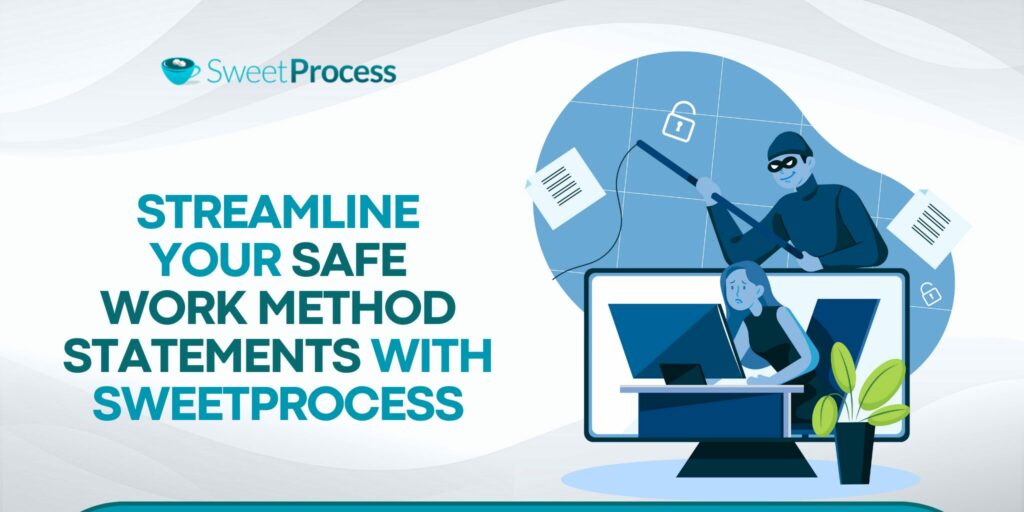
Creating safe work method statements (SWMS) can often feel like a time-consuming and complex process. But SweetProcess can make it effortless to create and implement. Beyond just creating SWMS, SweetProcess helps with seamless implementation across your entire team.
The platform automatically distributes updates and critical documents, ensuring that all workers, supervisors, and stakeholders have the latest safety protocols at their fingertips. This real-time communication minimizes the risk of missteps, keeping your workforce aligned and informed throughout the project lifecycle.
Don’t wait for the next accident! SweetProcess makes sure your team is protected before the first brick is laid or the first machine starts.
Act now. Streamline your SWMS, safeguard your workforce, and prevent costly mistakes before they happen. Your team’s safety can’t wait.
